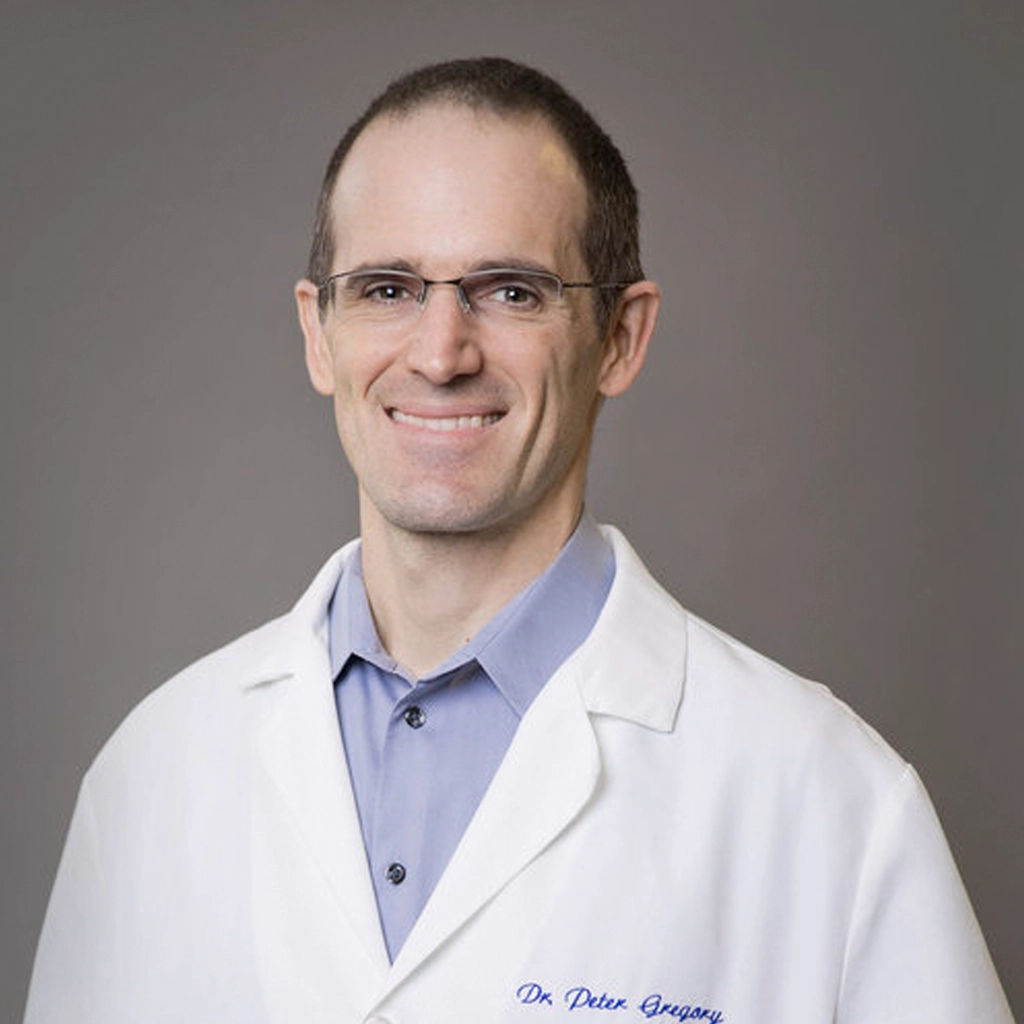
MEET
Dr. Peter Gregory
Dr. Peter Gregory has been practicing interventional medicine for over ten years, with a particular focus on venous disease and interventional nephrology. Dr. Gregory has extensive experience in minimally invasive vascular procedures and devotes all of his professional time to performing these procedures. He has a keen interest in the minimally invasive treatment of varicose veins and venous reflux, venous and arterial stenosis, and venous access. Nearly all of these procedures are performed utilizing catheter and wire based therapy through “pinhole” access through the skin.
After graduating with a degree in chemistry from the University of Virginia, Dr. Gregory obtained his medical degree from the Medical College of Virginia, where he received the coveted William Branch Porter award for excellence in Internal Medicine. Dr. Gregory trained in Internal Medicine at Washington University in St. Louis and Nephrology at Johns Hopkins University in Baltimore. During his tenure at Johns Hopkins, Dr. Gregory trained under the direction of noted interventional radiologist, Dr. W. Perry Arnold, becoming the first Johns Hopkins interventional nephrologist. Dr. Gregory incorporated venous port placement to his practice after training with Dr. Robert Hickman, a pioneer in central venous access therapy. Dr. Gregory is one of the earliest certified members of the American Society of Diagnostic and Interventional Nephrology.
Due to his unique experience, Dr. Peter Gregory regularly speaks on the topic of vascular intervention. For the past decade, Dr. Gregory has provided interventional vascular procedures to venous, nephrology, and oncology patients in the Puget Sound area. He calls Seattle home and is proud to be raising his family in the beautiful Northwest.
Dr. Gregory is a member of the American College of Phlebology and the American Society of Diagnostic and Interventional Nephrology. He is also certified by the American Board of Venous and Lymphatic Medicine.
Specialties
Radio Frequency Occlusion (Venefit Procedure®)
Laser Ablation - CTEV /EVLT
Ultrasound Guided Foam Sclerotherapy
Endo AVF
Sclerotherapy
Mini - Phlebectomy
Foam Sclerotherapy
Get In Touch With Dr. Peter Gregory
& The Sound Vascular & Vein Team
Call Our Office
253-874-7101
